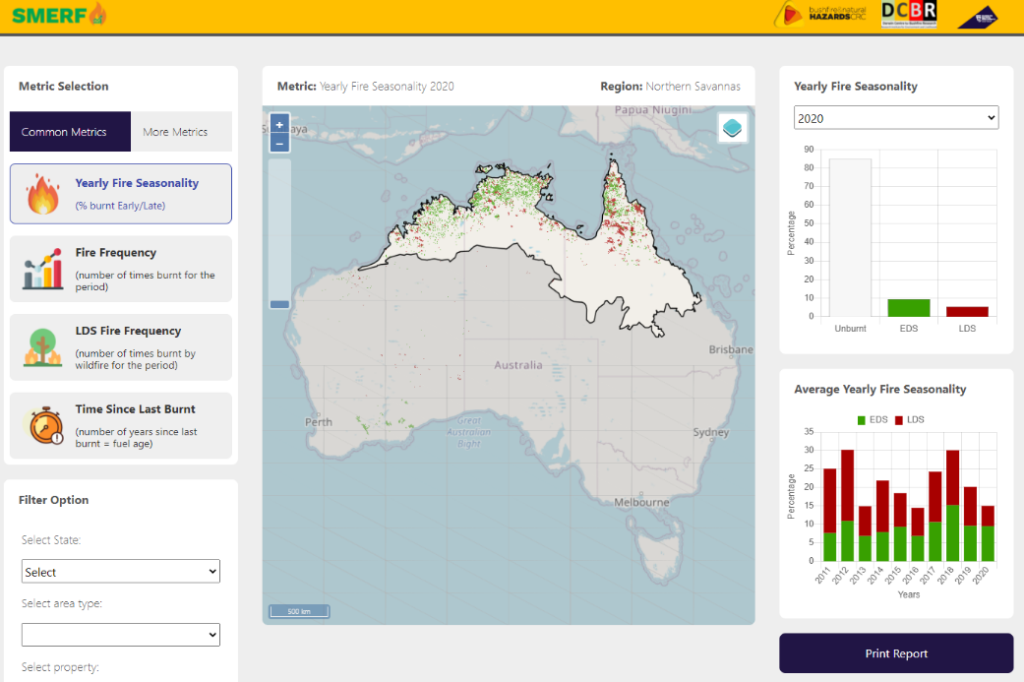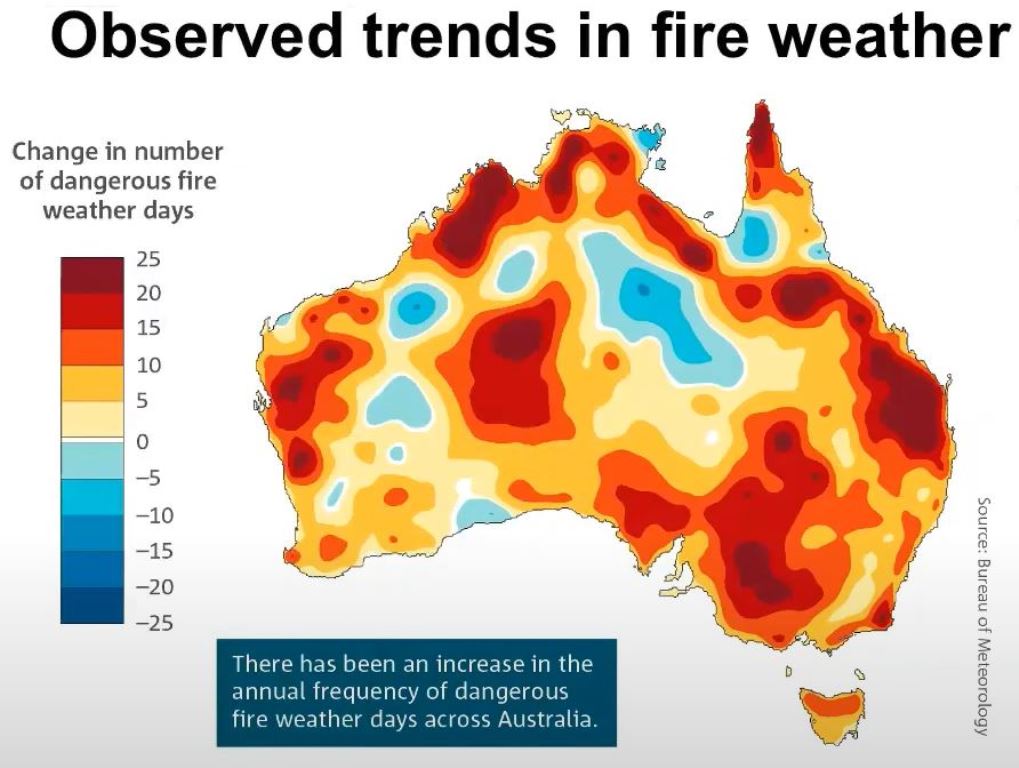Savanna Fire Forum 2021 Snapshot
The Savanna Fire Forum is an annual gathering of Savanna Burning project practitioners and supporting researchers across northern Australia. It was held online this year and talks can be accessed at https://www.icin.org.au/2021_north_australia_savanna_fire_forum_videos_view.
What are Savanna Burning projects?
Savanna Burning projects are a Federal Government approved Emissions Reduction Fund Method of Carbon Project registered under the Emissions Reduction Fund. They earn carbon credits (which can be traded or sold) if they successfully reduce greenhouse gas emissions (avoidance projects) or store carbon (sequestration projects) above documented baseline levels.
What is the aim of Savanna Burning projects?
Most current Savanna Burning projects aim to reduce greenhouse gas emissions (avoidance) by reducing the intensity and frequency of wildfire. There is also a method that includes increased stored carbon in above-ground dead vegetation (sequestration), but there has been little uptake of this method so far (only one project).
How do Savanna Burning projects reduce late dry season fires?
Cool fires in the early dry season are used to prevent late dry season fires by reducing fuel loads. Cool fires are patchier, burn less of the vegetation and have lower greenhouse gas emissions than hot fires.
When do you get your carbon credits?
Savanna Burning sequestration projects require contracts that last for at least 25 years, and you are assigned carbon credits at the end of the contracted period, whereas avoidance projects are assessed and carbon credits assigned annually, based on avoided emissions that year.
What areas are eligible for Savanna Burning projects?
Savanna Burning projects are relevant to areas with frequent, late dry season fire. In grazed areas, fire frequency is usually very low on the most productive land types, but it can be high on the less productive land types. Ineligible areas include any areas with gamba grass, cleared or natural grassland areas, and areas with less than 600mm annual rainfall.
Interesting facts from the 2021 Forum
Savanna Burning projects are estimated to have substantially reduced Australia’s greenhouse gas emissions. Across northern Australia 78 current Savanna Burning projects across have contributed 10% of the total national avoided emissions reported in the Emissions Reduction Fund to date. The NT Savanna Burning projects generate the most avoided emissions nationally.
There is increased corporate interest in carbon markets. Indigenous Savanna Burning carbon credits are seen as premium carbon credits with additional or co-benefits for the environment, and contributing to economic, social and cultural wellbeing of the Aboriginal groups that run them. Premium carbon credits attract additional value on the voluntary market and are valued by the corporate world wanting to increase their social licence to operate. One such example is Qantas, which offers Indigenous Savanna Burning credits to patrons wanting to offset their flight emissions.
Black-footed tree rats are thriving in the greater Darwin area because the fire regime is milder. They need long unburnt areas because they nest in tree hollows and pandanus. Rural Darwin landowners with native bush are providing important habitat!
New online fire management tools
There are 3 new online fire management tools.
- A Northern Australian Fire Information (NAFI) Mobile App available for Android and Apple devices.
Figure 1: NAFI - A QGIS plugin for QGIS (free mapping software) allows you to read in NAFI fire scars directly into your QGIS project.
- The SMERF dashboard https://smerf.net.au/ assists fire project managers with their reporting and planning. The Darwin Centre for Bushfires Research developed the Savanna Metrics Evaluation and Research Framework (SMERF) Dashboard, an automated online fire reporting system that allows easy generation of fire metrics for different areas. It is planned that NT pastoral boundaries will be added as another filter layer.

Fire weather is getting worse
For the Top End, the number of extreme fire weather days has increased in the dry season and build up (Figure 3). This is due to higher temperatures, which make fuels drier. Some climate change models also predict that there will be more dry lightning strikes in the future, which would further increase fire incidence. However, in the Barkly and parts of the Kimberley and Pilbara regions, there was a trend for fewer extreme fire days due to higher rainfall keeping pastures greener for longer (Figure 3).
Australia’s savanna vegetation has evolved with, and is well adapted to, regular fire. Many savanna trees and shrubs resprout from their base or trunks following fire and have very low rates of mortality (less than 5% die). However, the Darwin Centre for Bushfire Research found that severe fires (fires that occur during extreme fire weather) can kill 50% of trees and 100% of the biggest trees. This increases carbon emissions and can lead to a loss of biodiversity, including habitat loss for tree-hollow dependent species.
Aboriginal Savanna Burning and other carbon projects
Most of the avoided greenhouse gas emissions due to Savanna Burning projects are on Aboriginal land. There are 30 Aboriginal Savanna Burning projects, covering 17.9M Ha, generated 73% of total avoided emissions by Savanna Burning projects. The Aboriginal carbon industry now generates $20 million per year in carbon credits for avoided greenhouse gas emissions and has generated nearly $100 million in revenue to date. This revenue funds local jobs, ranger programs, outstation development, culture camps and other community projects.
The accountability requirements for Savanna Burning projects have driven an increasingly professional approach to Savanna Burning programs, with more planning and more training in fire management provided to Indigenous rangers.
The Aboriginal carbon industry also includes other types of carbon projects under the Emissions Reduction Fund, including Beef Cattle Herd Management (better herd management to reduce emissions intensity of herds) and Human Induced Regeneration (removing cattle to promote regeneration of vegetation).
There is a push to develop a Savanna Burning method for some of the 500mm to 600mm rainfall zone (Figure 4) with similar late fire frequency to the 600mm to 1000mm rainfall zone. The 10 Deserts project sees Savanna Burning projects as a way to fund better fire management of these desert areas.



